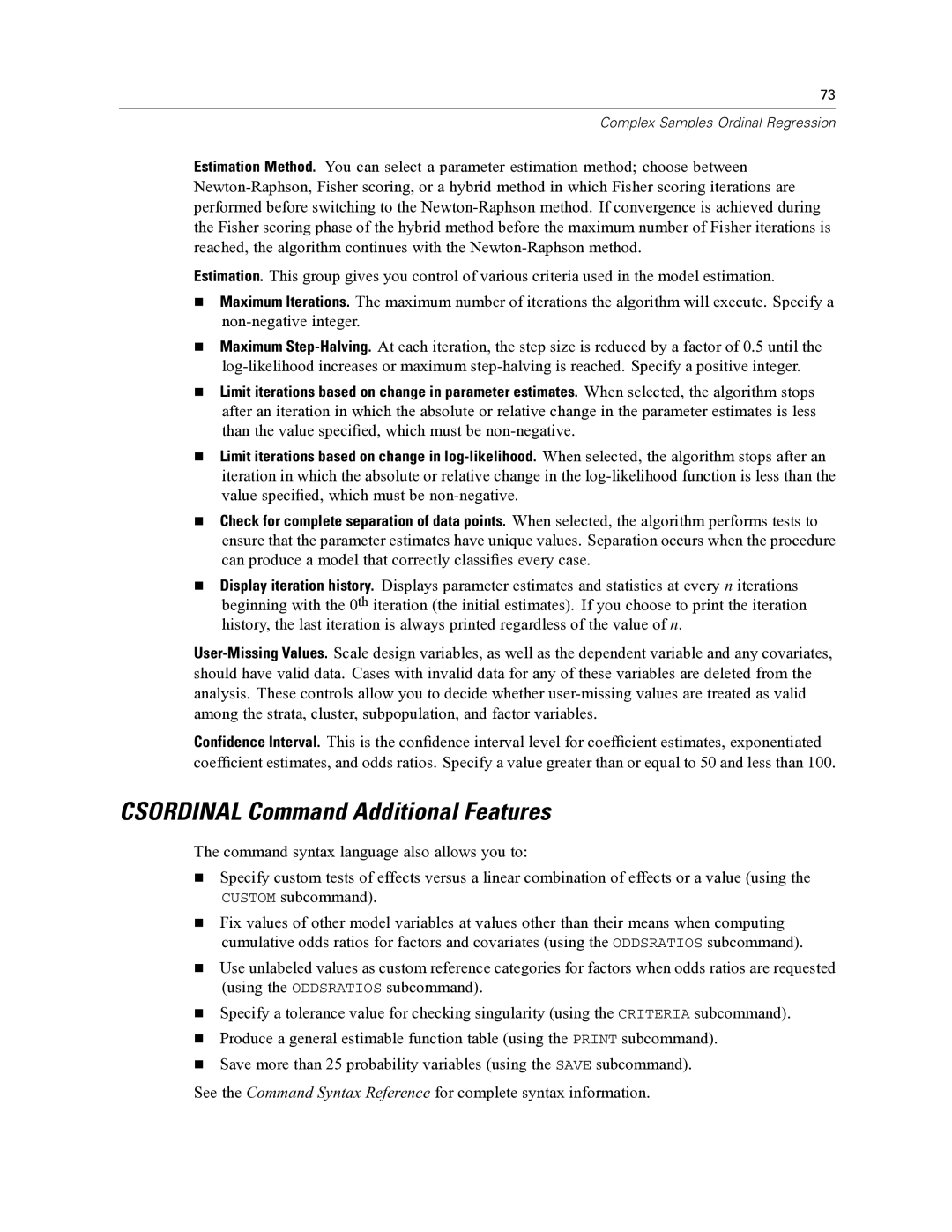73
Complex Samples Ordinal Regression
Estimation Method. You can select a parameter estimation method; choose between
Estimation. This group gives you control of various criteria used in the model estimation.
Maximum Iterations. The maximum number of iterations the algorithm will execute. Specify a
Maximum
Limit iterations based on change in parameter estimates. When selected, the algorithm stops after an iteration in which the absolute or relative change in the parameter estimates is less than the value specified, which must be
Limit iterations based on change in
Check for complete separation of data points. When selected, the algorithm performs tests to ensure that the parameter estimates have unique values. Separation occurs when the procedure can produce a model that correctly classifies every case.
Display iteration history. Displays parameter estimates and statistics at every n iterations beginning with the 0th iteration (the initial estimates). If you choose to print the iteration history, the last iteration is always printed regardless of the value of n.
Confidence Interval. This is the confidence interval level for coefficient estimates, exponentiated coefficient estimates, and odds ratios. Specify a value greater than or equal to 50 and less than 100.
CSORDINAL Command Additional Features
The command syntax language also allows you to:
Specify custom tests of effects versus a linear combination of effects or a value (using the CUSTOM subcommand).
Fix values of other model variables at values other than their means when computing cumulative odds ratios for factors and covariates (using the ODDSRATIOS subcommand).
Use unlabeled values as custom reference categories for factors when odds ratios are requested (using the ODDSRATIOS subcommand).
Specify a tolerance value for checking singularity (using the CRITERIA subcommand).
Produce a general estimable function table (using the PRINT subcommand).
Save more than 25 probability variables (using the SAVE subcommand).
See the Command Syntax Reference for complete syntax information.
